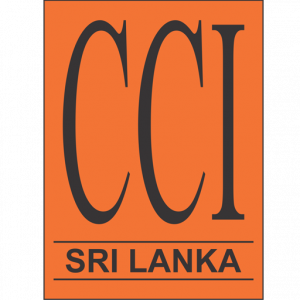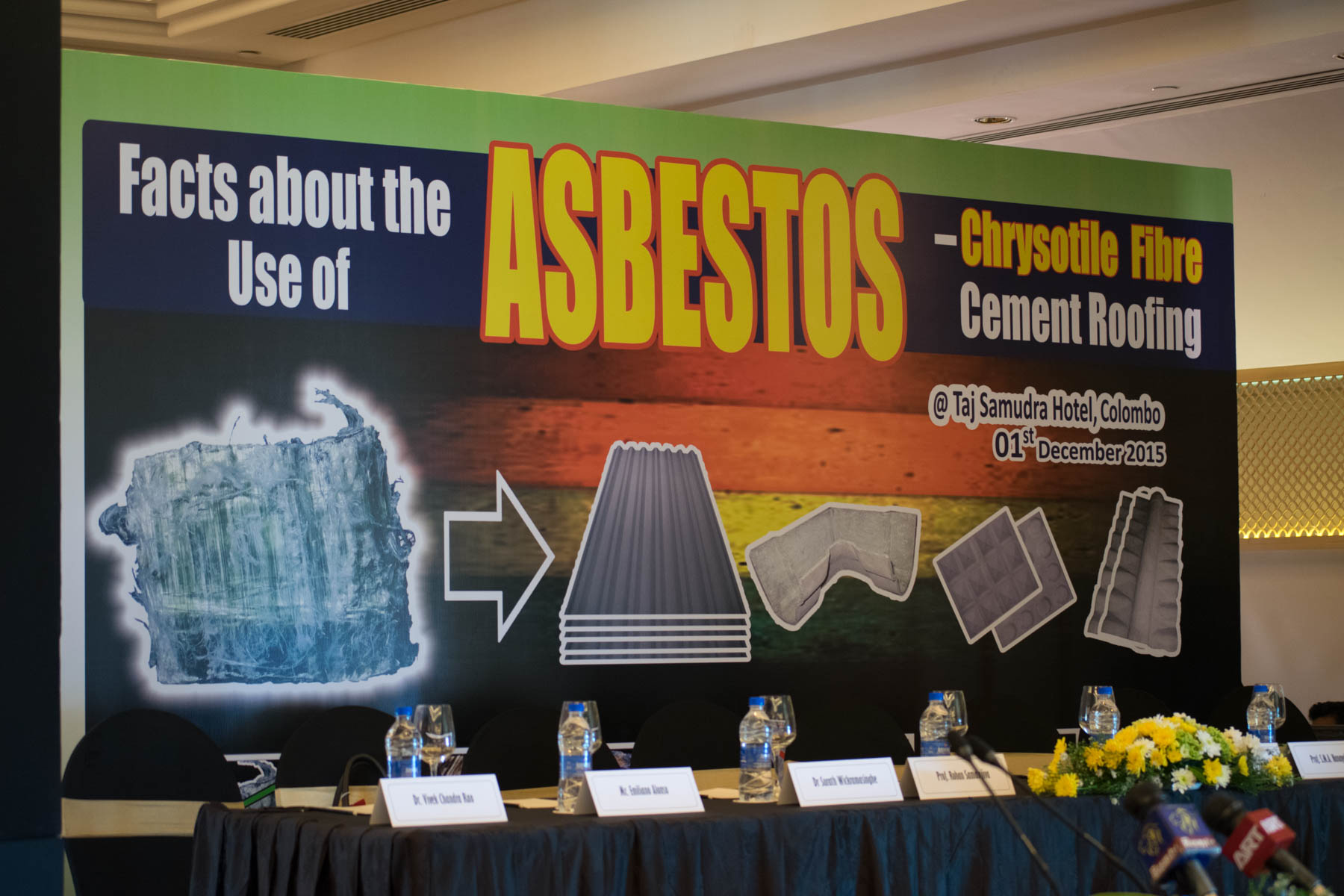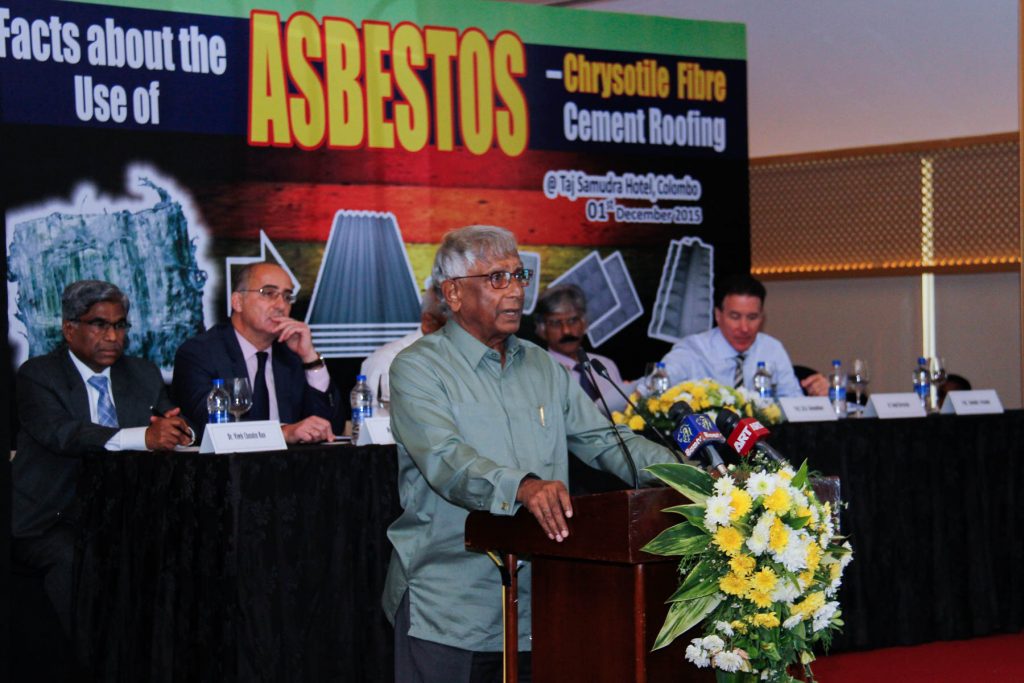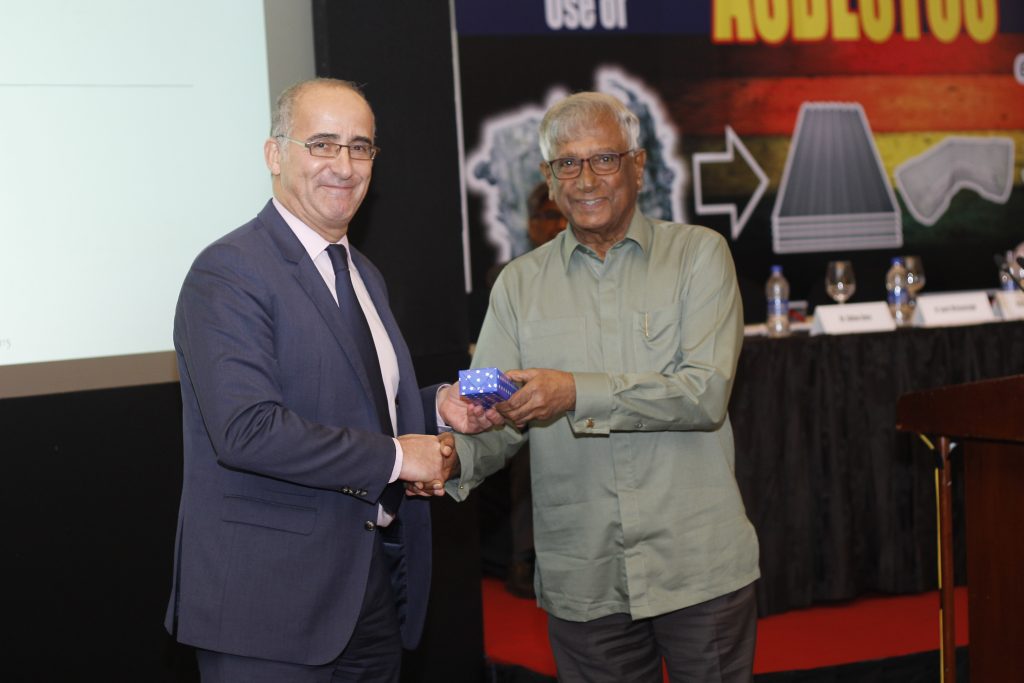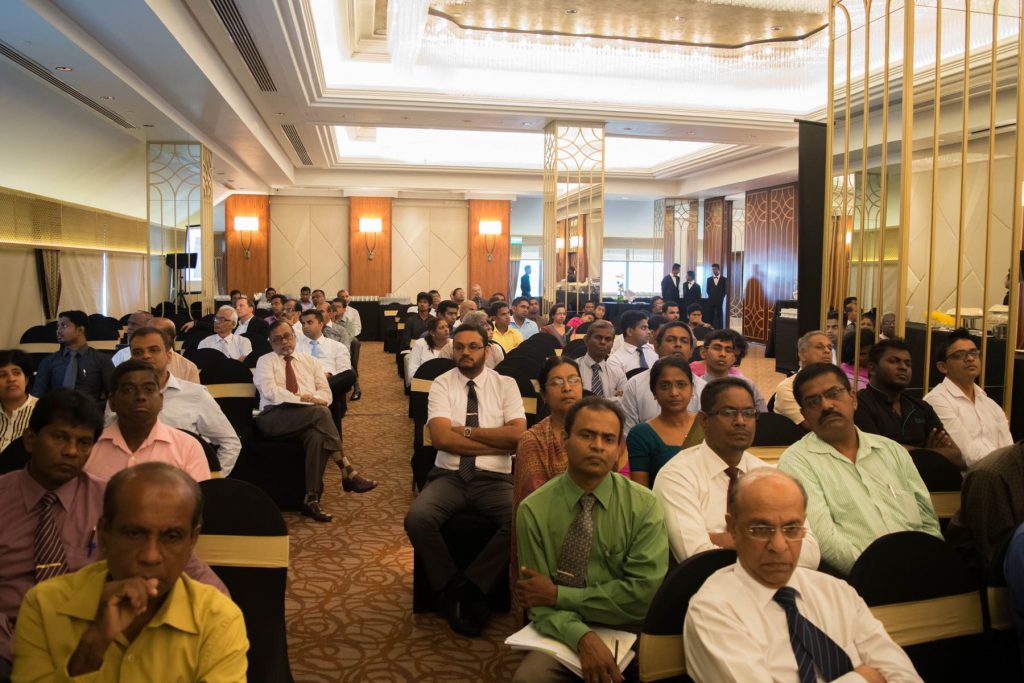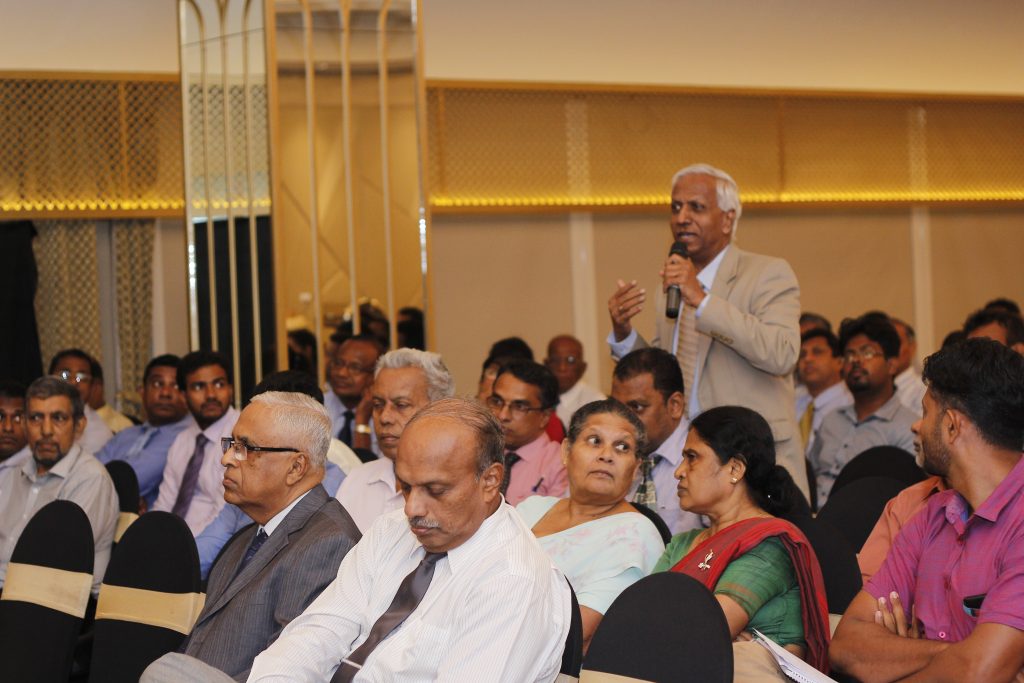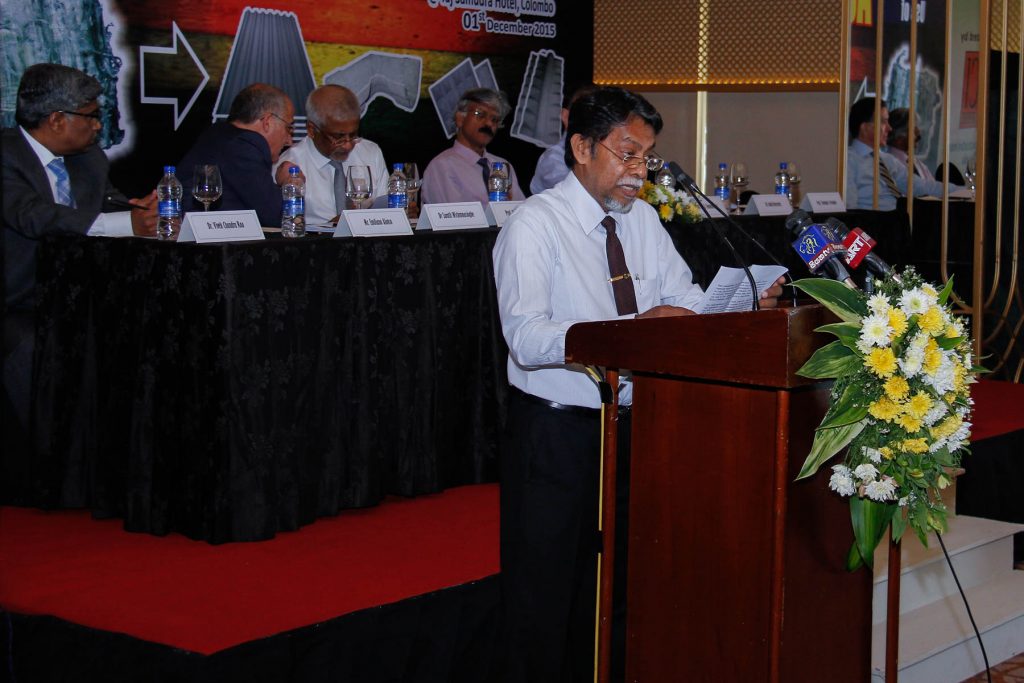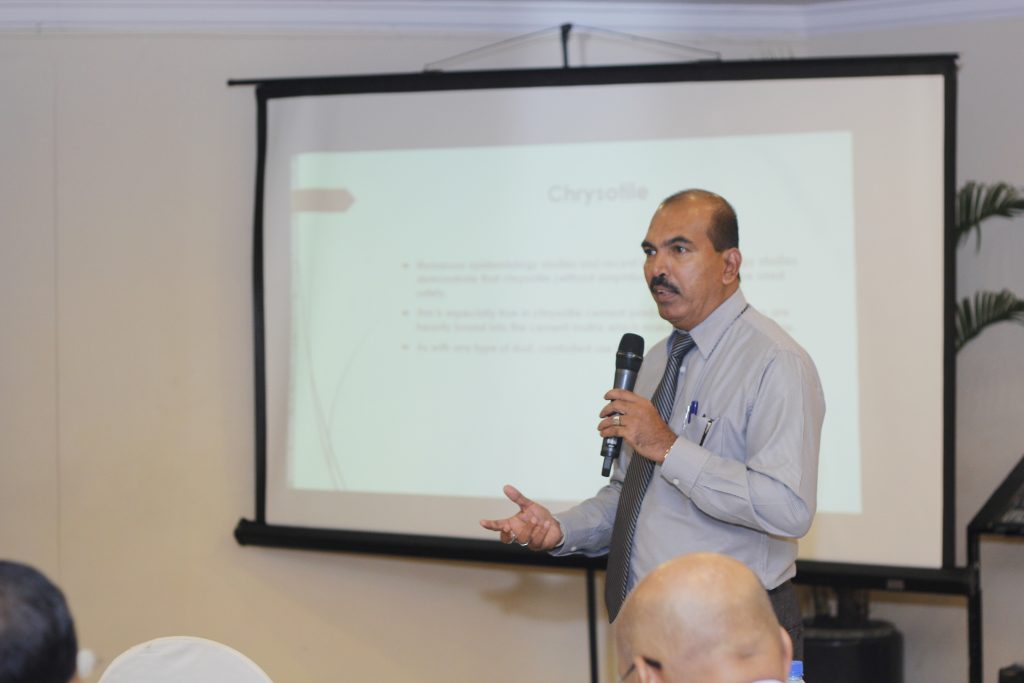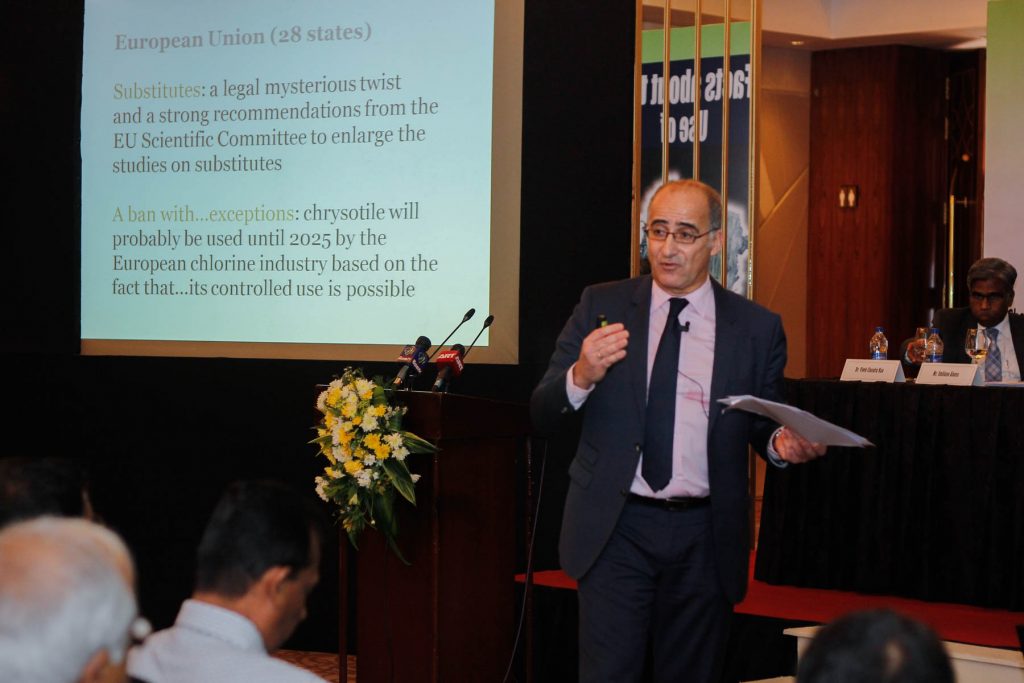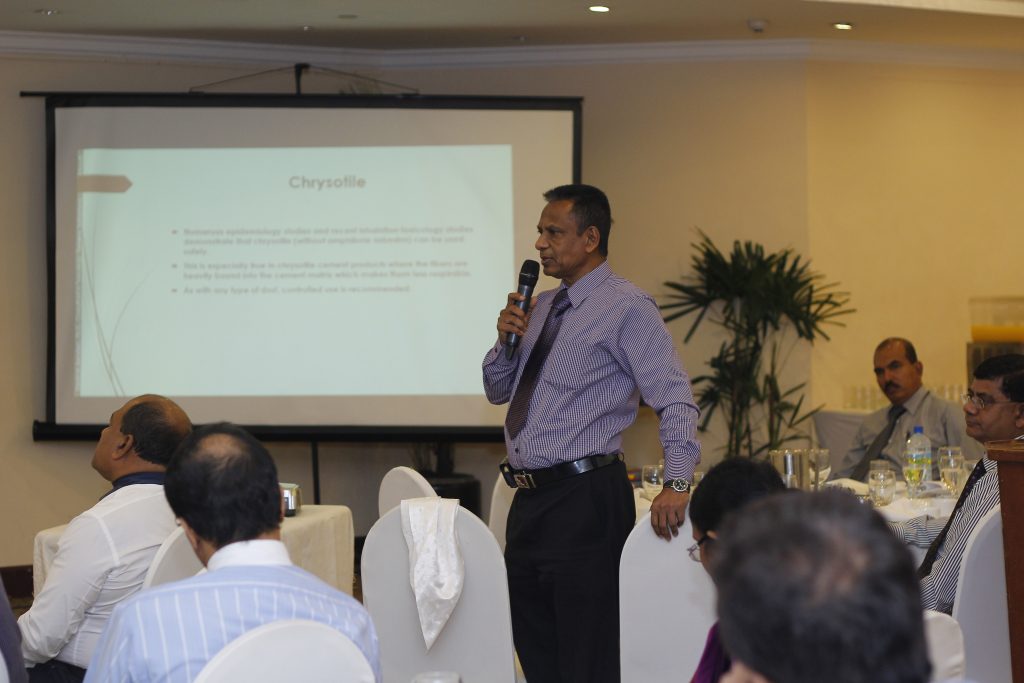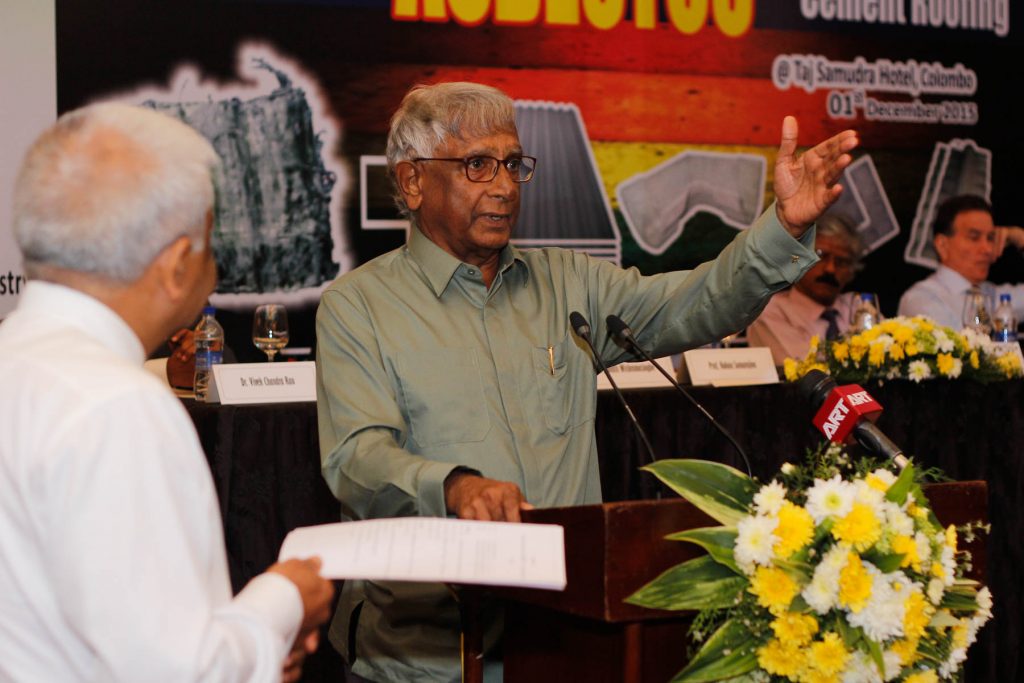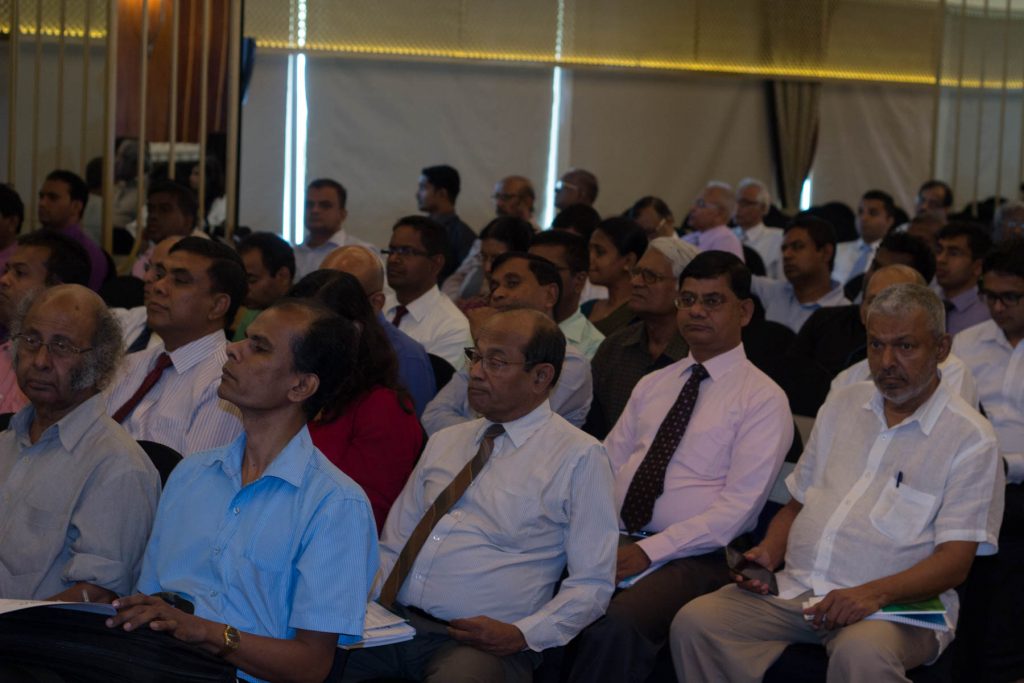SEMINAR ON “FACTS ABOUT THE USE OF ASBESTOS (CHRYSOTILE) FIBER CEMENT ROOFING” – 2015
The Seminar was held at Hotel Taj Samudra, Colombo from 2.30 p.m. on 1st December 2015.
The Chamber of Construction Industry Sri Lanka (CCI) organized this Seminar titled: “Facts about Asbestos (Chrysotile) Fibre Cement Roofing” it was timely for the simple reason that the on-going debate regarding the pros and cons of the use of Chrysotile fibre bonded with cement in roofing sheets has caused a debate among all the stakeholders, including the public.
Deshabandu Dr. Surath Wickramasinghe, President of CCI delivered an introductory speech while Prof. Rohan Samarajeewa functioned as the Moderator of the Seminar. Eng. Col. Nissanka Wijeratne, Secretary General of CCI coordinated the conduct of the Seminar.
At this Seminar eminent personalities of the caliber of Dr. David Bernstein of Switzerland delivered a thought provoking presentation on the subject of health risks of Chrysotile used in roofing and Mr. Emiliano Alfonso, International Chrysotile Association (ICA)’s Legal Advisor from Belgium spoke on the World Health Assembly (WHA)/World Health Organization (WHO) position on the use of Chrysotile.
In addition, eminent Indian Medical Professional Dr. Vivek Chandra Rao talked in depth, on the current regulations and the situation in India, as far as the use of Chrysotile fibre cement roofing is concerned. In India, Chrysotile fibre cement roofing in rural areas is a common sight as it is cheap, strong and is a non-conductor of electricity. According to him, Chrysotile fibre cement sheets are also extremely fire resistant. It is a main reason why many rural households use this as a form of roofing.
Prof. Ravindra Fernando, Professor of Forensic Medicine & Toxicology at the Medical Faculty of University of Colombo while making his presentation made a valuable suggestion that a medical research study should be made on the health impacts among the workers in the Asbestos (Chrysotile) fibre cement roofing manufacturing factories and those living in the vicinity of these factories, who are the most vulnerable group due to the exposure to Chrysotile fibres in Sri Lanka, with a view to making appropriate policy decisions, whether to ban or not to ban the usage of Asbestos. Prof. Ravindra Fernando proposed that the Asbestos industry, if it makes available the required resources for this study, a report could be submitted within a period of one year. This report will be very useful to the Authorities to take a final decision on whether Asbestos should be banned or the use of Chrysotile cement roofing to be allowed in a regulated manner in Sri Lanka, as in India.
The Seminar was also addressed by Prof. S.M. Nanayakkara, Professor of Civil Engineering at the University of Moratuwa, Sri Lanka who is an expert on cement and concrete and also an acknowledged authority on the subject of developing alternative materials to Chrysotile cement roofing. Prof. Nanayakkara, during his presentation, dealt with various alternatives to Asbestos roofing sheets and their cost effectiveness in the construction industry. Prof. Nanayakkara supported the proposal made by Prof. Ravindra Fernando at the Seminar, to undertake a scientific study on the health impacts on the use of Chrysotile cement roofing.
There were interactive question and answer sessions after every presentation which made the seminar very lively and gave the audience the opportunity to participate, clear their doubts on the use of Chrysotile cement roofing.
Prof. Rohan Samarajeewa summed up the proceedings of the seminar while he himself asking some pertinent questions on the Asbestos and Chrysotile fiber for the benefit of the audience. Finally, Eng. Nissanka N. Wijeratne, Secretary-General of CCI proposed a vote of thanks to the resource persons, participants, moderator and his staff and others who helped organizing this seminar in many fold ways.
From the several presentations made at the seminar by experienced and eminent toxicologists, it was quite apparent that there is no clear evidence that the use of Chrysotile fibres in the production of fibre cement Asbestos roofing sheets will cause cancer or other serious health risks. In the fibre cement roofing sheets, only 8% of Chrysotile fibre is used which is well trapped in a cement bond. Most of the misconceptions appear to have arisen due to the use of Chrysotile fibre mixed with other amphibole Asbestos commonly known as blue & brown Asbestos, in the past in Western countries due to cheaper prices. There is no dispute on the fact that blue and brown amphibole Asbestos are definitely harmful. In Sri Lanka, during the entire history of Asbestos fibre cement production, only Chrysotile fibres have been used. However, in Sri Lanka, no scientific study has been conducted to ascertain whether the use of Chrysotile fibres in the production of fibre cement roofing sheets had any adverse health impacts, at least among the most vulnerable group who are the factory workers and those living in the vicinity of the factories. The research carried out in India on the Asbestos factory workers has established no health hazard whatsoever with the regulated use of Chrysotile fibres in producing fibre cement roofing sheets. As such in India, even now, production and use of Chrysotile fibre cement roofing sheets is allowed. But, in the production process certain safety standards have to be followed.
Gallery
